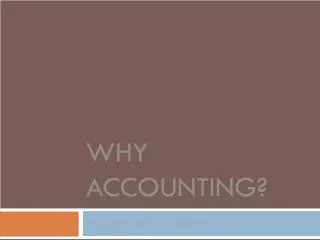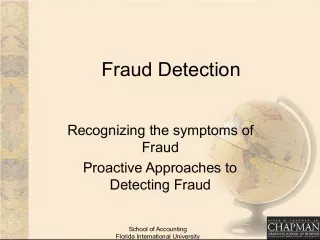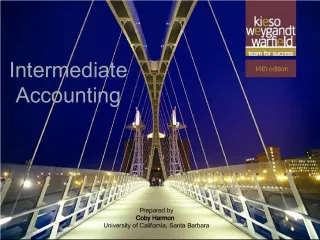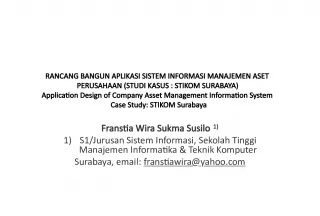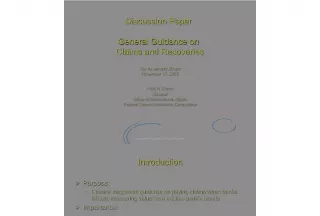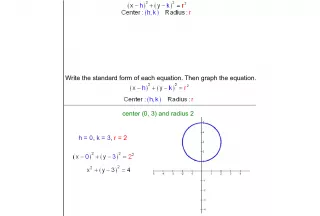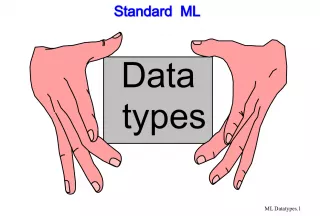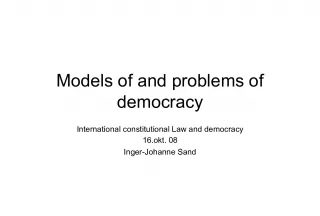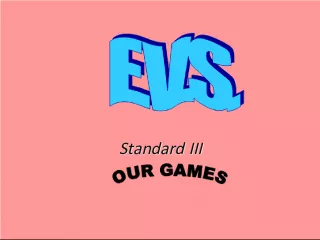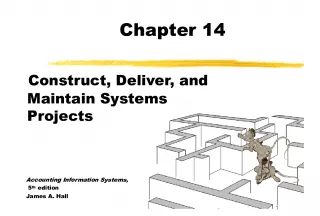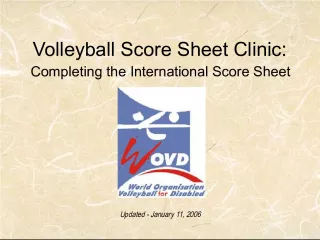International Accounting Standard 37: Provisions, Contingent Liabilities and Contingent Assets
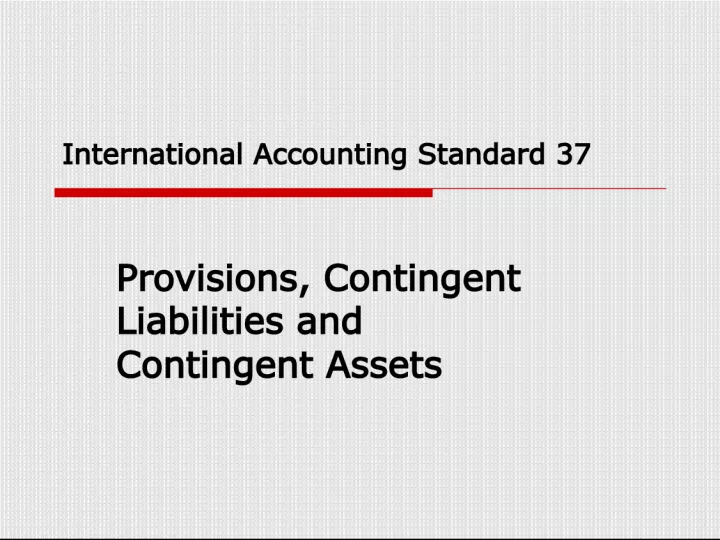

This standard outlines the scope, definitions, recognition, measurement, reimbursement, review, and disclosures of provisions, contingent liabilities, and contingent assets, except for those resulting from executory contracts and those covered by other standards such as financial instruments, construction contracts, and insurance contracts.
- Uploaded on | 3 Views
-
 santana
santana
About International Accounting Standard 37: Provisions, Contingent Liabilities and Contingent Assets
PowerPoint presentation about 'International Accounting Standard 37: Provisions, Contingent Liabilities and Contingent Assets'. This presentation describes the topic on This standard outlines the scope, definitions, recognition, measurement, reimbursement, review, and disclosures of provisions, contingent liabilities, and contingent assets, except for those resulting from executory contracts and those covered by other standards such as financial instruments, construction contracts, and insurance contracts.. The key topics included in this slideshow are . Download this presentation absolutely free.
Presentation Transcript
Slide1International Accounting Standard 37Provisions, Contingent Liabilities and Contingent Assets
Slide22International Accounting Standard 37 Scope Definitions Recognition Measurement Reimbursement Review and use of provisions Disclosures
Slide33Scope of standard This Standard shall be applied for provisions, contingent liabilities and contingent assets, except: those resulting from executory contracts, except where the contract is onerous (ie costs under contract >the economic benefits expected to be received) ; and those covered by another Standard. Financial instruments – IAS 39 Construction contracts – IAS 11 Insurance contracts – IFRS 4 etc….
Slide44Scope (cont’d) Provisions are liabilities of uncertain timing or amount. In some countries the term 'provision' is also used for depreciation, impairment of assets and doubtful debts: these are adjustments to the carrying amounts of assets and are not addressed in this Standard.
Slide55Provisions Vs Other Liabilities Provisions can be distinguished from other liabilities such as trade payables and accruals because there is uncertainty about the timing or amount of the future expenditure required in settlement. (a) trade payables are liabilities to pay for goods or services that have been received or supplied and have been invoiced or formally agreed with the supplier; and (b) accruals are liabilities to pay for goods or services that have been received or supplied but have not been paid, invoiced or formally agreed with the supplier, including amounts due to employees (for example, amounts relating to accrued vacation pay). The uncertainty is generally much less than for provisions.
Slide66Provisions Vs Other Liabilities Accruals are often reported as part of trade and other payables, whereas provisions are reported separately .
Slide77Relationship between Provisions and Contingent Liabilities This Standard distinguishes between: (a) provisions; and (b) contingent liabilities
Slide88Povisions ARE recognized as liabilities (assuming that a reliable estimate can be made) because they ARE present obligations and IT IS probable that an outflow of resources embodying economic benefits will be required to settle the obligations
Slide99Contingent Liabilities Are NOT recognized as liabilities because they are either: (i) possible obligations : it has yet to be confirmed whether the entity has a present obligation that could lead to an outflow of resources embodying economic benefits; or (ii) present obligations that do not meet the recognition criteria in this Standard.
Slide1010Recognition Criteria A provision shall be recognized when: an entity has a present obligation (legal or constructive) as a result of a past event ; and it is probable that an outflow of resources embodying economic benefits will be required to settle the obligation; and a reliable estimate can be made of the amount of the obligation. IF these conditions are not ALL met, no provision shall be recognized.
Slide1111Present Obligation Past events give rise to present obligations In cases of doubts if past events give rise to present obligations, all available evidence should be evaluated, including, for example, the opinion of experts as well as the evidence provided by events after the balance sheet date. On the basis of such evidence: (a) a provision is recognized (if the recognition criteria are met) where it is more likely than not that a present obligation exists at the balance sheet date; and (b) disclose a contingent liability where it is more likely that NO present obligation exists at the balance sheet date, unless the possibility of an outflow of resources embodying economic benefits is remote.
Slide1212Past Event A past event that leads to a present obligation is called an obligating event. And it is necessary that the entity has no realistic alternative to settling the obligation created by the event. This is the case only: where the settlement of the obligation can be enforced by law; or in the case of a constructive obligation, where the event (which may be an action of the entity) creates valid expectations in other parties that the entity will discharge the obligation.
Slide1313Probable Outflow of Resources For the purpose of this Standard, an outflow of resources or other event is regarded as probable if the event is more likely than not to occur. Where it is not probable that a present obligation exists, an entity discloses a contingent liability, unless the possibility of an outflow of resources embodying economic benefits is remote.
Slide1414Reliable Estimate of the Obligation Except in extremely rare cases, an entity will be able to determine a range of possible outcomes and can therefore make an estimate of the obligation that is sufficiently reliable to use in recognizing a provision. Where no reliable estimate can be made, a liability exists that cannot be recognized. That liability is disclosed as a contingent liability
Slide1515Contingent Liabilities A liability that does not meet the recognition criteria of a provision is a contingent liability . A contingent liability is disclosed and NOT recognized in the financial statements.
Slide1616Contingent Assets Contingent assets usually arise from unplanned or other unexpected events that give rise to the possibility of an inflow of economic benefits to the entity. A contingent asset is disclosed, where an inflow of economic benefits is probable
Slide1717Measurement Amounts recognized as a provision shall be based on: Best Estimate Regarding expenditures required to settle the present obligation determined by the judgment of management Risks and uncertainties Surrounding many events shall be taken into account in reaching the best estimate of a provision Present value Where the effect of the time value of money is material, the amount of a provision shall be the PV of the expenditures expected to be required to settle the obligation.
Slide1818Measurement (cont’d) Future events Future events that may affect the amount required to settle an obligation shall be reflected in the amount of a provision where there is sufficient objective evidence that they will occur. Expected disposal of assets Gains from the expected disposal of assets shall not be taken into account in measuring a provision.
Slide1919Reimbursements Expenditure required to settle a provision may be reimbursed by another party (ex. insurance claim).
Slide2020Reimbursement Recognition the reimbursement shall be recognized when, and only when, it is virtually certain that reimbursement will be received if the entity settles the obligation. The reimbursement shall be treated as a separate asset. The amount recognized for the reimbursement shall not exceed the amount of the provision. In the income statement, the expense relating to a provision may be presented net of the amount recognized for a reimbursement.
Slide2121Review and use of provisions Provisions shall be reviewed at each balance sheet date and adjusted to reflect the current best estimate. If it is no longer probable that an outflow of resources embodying economic benefits will be required to settle the obligation, the provision shall be reversed. A provision shall be used only for expenditures for which the provision was originally recognized .
Slide2222Disclosure for provisions For each class of provision, an entity shall disclose: (a) the carrying amount at the beginning and end of the period; (b) additional provisions made in the period, including increases to existing provisions; (c) amounts used (ie incurred and charged against the provision) during the period; (d) unused amounts reversed during the period; and (e) the increase during the period in the discounted amount arising from the passage of time and the effect of any change in the discount rate. Comparative information is not required.
Slide2323Disclosure for provisions (cont’d) An entity shall disclose the following for each class of provision: (a) a brief description of the nature of the obligation and the expected timing of any resulting outflows of economic benefits; (b) an indication of the uncertainties about the amount or timing of those outflows; and (c) the amount of any expected reimbursement. Where any of the information mentioned above is not disclosed because it is not practicable to do so, that fact shall be stated.
Slide2424Disclosures for Contingent Liability or Asset Unless the possibility of any outflow or inflow in settlement is remote, an entity shall disclose for each class of contingent liability or asset at the balance sheet date a brief description of the nature of the contingent liability or asset and, where practicable: (a) an estimate of its financial effect (b) an indication of the uncertainties relating to the amount or timing of any outflow; and (c) the possibility of any reimbursement.
Slide2525Effective Date This Standard becomes operative for annual financial statements covering periods beginning on or after 1 July 1999.
Slide2626THANK YOU


